#sharmila tagore father
Explore tagged Tumblr posts
Text
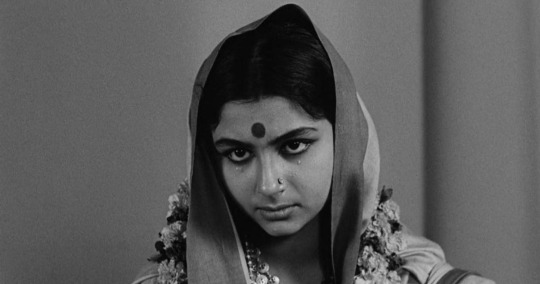
Devi (1960, India)
One year following his stunning Apur Sansar (The World of Apu) (1959), director Satyajit Ray reunited actors Sharmila Tagore and Soumitra Chatterjee. By this point, Ray was no longer the studious yet inexperienced hand that shepherded the Apu trilogy to its conclusion. But his lead actors were still only starring in their second-ever film. Bengali cinema (Tollywood, based in West Bengal) had a proud history before Ray’s Apu trilogy (1955-1959), but now had caught the attention of audiences beyond India – disproportionately so, as Bollywood (Hindi cinema, based in Mumbai) has always been the largest part of the nation’s film industry. Unlike some of the most popular Tollywood and Bollywood films of the time (and now), Ray never showed interest in romantic-musical escapism and instead dared to make films challenging India’s caste system, sexism, and religious fanaticism.
In his first work addressing religious fanaticism (and arguably his first truly political film) comes Devi, also known by its English-language title as The Goddess. Unlike 1965’s Mahapurush (The Holy Man), which also covers the same topic, Devi is thoroughly a drama, with no hint of comedy or satire. The film’s somber tone did not sit well with general Indian audiences used to lighter fare, and its willingness to criticize the extremes of Hindu religiosity saw the film’s harshest critics deem it (and Ray) as anti-Hindu. If released today, Devi almost certainly would receive a similar, if not more intense, backlash from groups and individuals in India criticizing it out of bad faith.
Somewhere in a rural town in nineteenth century Bengal, younger brother Umaprasad (Soumitra Chatterjee) is ready to depart for Kolkata for university and to study English. Umaprasad’s family is wealthy, with numerous servants tending to their multistory mansion. All is well in their richly-furnished, well-kempt home as he leaves his teenage* wife Dayamayee‡ (Sharmila Tagore) to take of his aging father/her father-in-law Kalikinkar Choudhuri (Chhabi Biswas). One night, Kalinikar awakens from a marvelous dream. An adherent of the goddess Kali, his visions lead him to believe that his daughter-in-law is Kali’s physical incarnation. Upon awakening, he rushes to Dayamayee and falls to his feet in worship. Dayamayee’s life as Umaprasad’s wife has ended. Against her will, she becomes an object of religious devotion as word spreads of Kalikinkar’s dream and a supposed miracle shortly thereafter.
Devi also stars Purnendu Mukherjee as Umaprasad’s brother, Taraprasad; Karuna Banerjee as Harasundari, Taraprasad’s wife; and Arpan Chowdhury as Taraprasad and Harasundari’s son (Dayamayee’s nephew).
Where a year prior Apur Sansar was Soumitra Chatterjee’s movie, Devi is likewise Sharmila Tagore’s. Tagore, sixteen years old upon the film’s release year, again finds herself in a role with little dialogue, even less than her supporting role in Apur Sansar. The moment Tagore’s Dayamayee becomes a devotional figure, her dialogue and ability to exert her own agency disappears. Until Umaprasad returns home shortly after the halfway mark, so much of Tagore’s performance before and after seems spliced from a great silent film. Perched on a small block, a pedestal if you will, she almost never looks at the camera or those intoning “Mā” (“Mother” in Bengali; Kali is the avatar of Durga, and both are forms of the Mother Goddess, Devi) as men and women pray and prostrate themselves in front of her. At times, Dayamayee’s mental and physical exhaustion is clear, even if she is looking sideways or into the ground, as she sits in place for several hours at a time. Is there any one there to make sure that this “goddess” is properly being taken care of? It seems doubtful.
It is unclear how long it takes for word to reach Umaprasad in order for him to return home to see the daily scenes at his family’s residence. Even for less than a day, this whole situation is intolerable to Dayamayee. Her resignation is evident in her slightly hunched back, unable to find a psychological or physical escape. The scene where Umaprasad returns home to see Dayamayee venerated as a goddess contains striking facial acting from both Tagore and Chatterjee. In Chatterjee, we see Umaprasad comprehending the situation in real time, as his horror renders him almost speechless. In Tagore, Dayamayee looks up, and in a figment of hope, there is utter heartbreak. These long days of adoration and miracle-seeking pilgrims have even shaken her sense of reality, as almost all vestiges of her past life wither away. In a rare private moment with Umaprasad, she questions her very being: “But what if I am a goddess?”
Satyajit Ray, who also wrote this screenplay based on the 1899 Bengali short story of the same name by Prabhat Kumar Mukhopadhyay, was part of the Brahmo Samaj movement, which advocates for a monotheistic interpretation of Hinduism. Brahmos, crucially, reject the caste system and avatars/incarnations of gods and goddesses. Ray’s adherence to the reforms of Brahmo Samaj color his filmography more obviously as his career progresses (I have not seen too much of Ray’s work, but I have not yet encountered a film of his that inelegantly portrayed his beliefs). Ray’s reformist and Western-leaning stances are embodied by Chatterjee’s Umaprasad, who we see clash with his more traditional father over social mores (the latter is distrustful of his son’s education, and derides his son for supposedly espousing Christian beliefs). Except for the scenes of a religious procession immediately after the opening credits, at no point does Ray imbue any of the religious images with any sense of glory, wonder, or veneration. Cinematographer Subrata Mitra (the Apu trilogy, 1966’s Nayak) dispenses of any ethereal lighting until the closing seconds, and his medium to close shots capture the uncomfortable anguish on both sides – Dayamayee’s alternating ambivalence and despair, the worshippers’ desire for comfort, deliverance, and the miraculous.
Like in several of Ray’s films including Mahapurush and Ganashatru (An Enemy of the People) (1989), Devi rejects dogmatism, miracles, superstitions, and anything that cannot have a rational or scientific explanation. Simultaneously, Ray realizes that most Indians, in the face of events profound and improbable, find science and rationality cold, confusing, and unsatisfying. Faith endows meaning to such moments. Faith ascribes purpose to happiness and suffering – something rationalism cannot provide. The unsuitability of both to provide a solution in Devi is the film’s secondary tragedy, as belief systems confront a scenario where a middle ground is impossible.
Devi’s principal tragedy is the religious objectification of Dayamayee. Of all of Ray’s female protagonists from Pather Panchali (1955) to this point, none of them are as constrained as Tagore’s Dayamayee. She may not live in poverty like Apu’s sister and mother in the Apu trilogy, nor is she the wife of an indulgent husband (1958’s Jalsāghar or The Music Room). And though she is not bound by shackles or subject to physical or sexual abuse, Dayamayee is nevertheless a victim of the unpredictable whims of men (and it is almost entirely men who worship her). Her portrayal is nuanced: she does not succumb entirely to self-pity, nor does she possess the strength to tell her father-in-law and his fellow worshippers to halt their devotional displays. She is aware of the communal damage she will cause if she so much renounces her unwanted divinity. At the same time, she cannot help but yearn for freedom, for others to speak to her like a human again – complete with aspirations, desires, and fears that no one can associate with a god.
Too often in cinema – wherever and whenever it hails from, including midcentury India – women play simplistic roles: the lover, the damsel in distress, the spurned wife. Where numerous filmmakers and actresses in the Hollywood Studio System were actively working to dismantle this element of patriarchy, I do not detect a similar level of rebellion in mainstream Indian cinema in the 1950s and 1960s (and, to some extent, this remains true). Ray did not stand alone in attempting to endow female characters with complexity (within and outside Bengali cinema), but his contributions to this development within the context of midcentury Indian cinema are crucial. Many of his films attempt a cinematic dialogue that critiqued patriarchal abuses with subtlety and bluntness – often to the chagrin of the public and government officials. The public outrage following Devi’s initial domestic release saw the film banned from seeking international distribution. Prime Minister Jawaharlal Nehru intervened and reversed that decision.
Nevertheless, consider some of the works in Ray’s first decade as a filmmaker: The Apu trilogy, Devi, Teen Kanya (1961), The Big City (1963), and Charulata (1964). Together, all seven of those films reveal a filmmaker willing to take mainstream Indian filmmaking to task for regressive and simplistic portrayals of women, whether in lead or supporting roles. Devi might be the most shattering of that collection, caught between human weakness and the unknowability of the divine.
My rating: 8.5/10
^ Based on my personal imdb rating. My interpretation of that ratings system can be found in the “Ratings system” page on my blog. Half-points are always rounded down.
For more of my reviews tagged “My Movie Odyssey”, check out the tag of the same name on my blog.
* There were no child marriage laws in India in the nineteenth century, when this film is set. Child marriage remains prevalent in India, despite loophole-filled laws and a lack of enforcement.
‡ Multiple spellings of the protagonist's name are out there from reputable sources. I am using either the most or second-most common spelling here.
#Devi#The Goddess#Satyajit Ray#Sharmila Tagore#Soumitra Chatterjee#Chhabi Biswas#Purnendu Mukherjee#Karuna Banerjee#Arpan Chowdhury#Anil Chatterjee#Subrata Mitra#Dulal Dutta#Ustad Ali Akbar Khan#Bengali cinema#TCM#My Movie Odyssey
3 notes
·
View notes
Text
Saif Ali Khan Explains Pataudi Family’s Cricket Legacy to Son Taimur
In a heartwarming video circulating on social media, actor Saif Ali Khan is seen playing cricket with his son, Taimur Ali Khan. As Taimur practices his batting skills, Saif takes the opportunity to share the rich cricketing history of the Pataudi family.

A Legacy Explained
Saif’s father, Mansoor Ali Khan Pataudi, was a legendary Indian cricketer and former captain of the Indian cricket team. In a video shared by International Cricket Masters UK, Saif explains to Taimur about the concept of counties in cricket, saying, “Counties are like clubs. Like Sussex, Worcestershire. Your great grandfather played for Worcestershire. Your grandfather captained Sussex.”
Training at Lord’s
The video appears to be shot in London, as another clip shows 8-year-old Taimur honing his batting skills at the indoor nets in the Lord’s complex. In addition to the training session, Saif and Taimur enjoy a friendly match, with Saif taking to the crease while Taimur bowls to him.
A Family of Legends
Saif Ali Khan’s family boasts a remarkable cricket and Bollywood legacy. While Saif followed in his mother Sharmila Tagore’s footsteps into acting, his father, Mansoor Ali Khan Pataudi, also known as Tiger Pataudi, captained the Indian cricket team and received the prestigious CK Nayudu Lifetime Achievement Award. Saif’s paternal grandfather, Iftikhar Ali Khan Pataudi, captained the Indian cricket team in 1946 and holds the unique distinction of having played Test cricket for both India and England.
Watch the Video
Experience this touching moment between father and son as they connect over their family’s storied cricketing heritage.
0 notes
Text
Koffee With Karan 8: Karan Johar reveals about a trait that Sara Ali Khan and Saif Ali Khan have in common 8 : Bollywood News — Bollywood Hungama
Karan Johar has worked with both, Sara Ali Khan and Saif Ali Khan in different projects and noticed that the father-daughter duo are quite similar.
Karan Johar is all set to bring fans close to their favorite stars in the new season. With the guestlist of Deepika Padukone, Ranveer Singh, Alia Bhatt, Kareena Kapoor Khan, Sunny and Bobby Deol, Ajay Devgn, Kiara Advani, Sidharth Malhotra, among others, the recent guests on the show would be the mother-son duo of Sharmila Tagore and Saif Ali Khan. While their royal legacy definitely will be a part of the discussion on the couch, the duo also opened up about their family to Karan Johar, who too shares a great bond with the Pataudis.
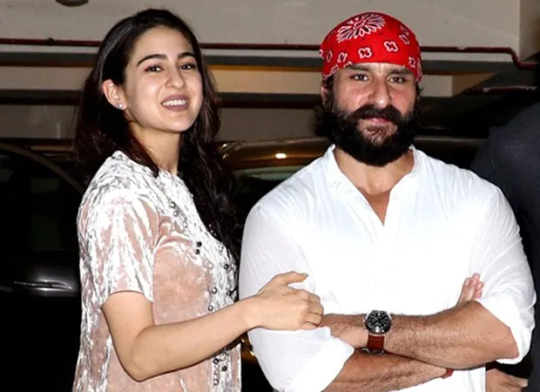
Koffee With Karan 8: Karan Johar reveals about a trait that Sara Ali Khan and Saif Ali Khan have in common
In fact, Karan Johar has also worked with the Khan-daan in many of his projects and the filmmaker had confessed that after working with Saif Ali Khan and his daughter Sara Ali Khan, he noticed a similarity between them. While Sara has inherited a lot of good looks, skills and mannerisms from her parents Saif and Amrita Singh. Karan Johar revealed one particular trait she has taken from her father. Talking about the same, KJo said, “I think Sara gets being indecisive from Saif as per my observation, they both are very indecisive. Especially when it comes to her work. She is much better now because I've seen her grow up in the movies.” In his defense, Saif Ali Khan said, “I am not indecisive anymore. I used to be. I used to be a lot of things.”
For the unversed, Sara Ali Khan has already made an appearance on the show with Ananya Panday whereas Saif’s wife Kareena Kapoor Khan too has been a part of the new season with her sister-in-law Alia Bhatt.
Speaking of the show, Season 8 has some interesting additions on the show which includes some new unseen, unheard segments as the producer, director, actor and show host Karan Johar is set for unfiltered and candid conversations. From the iconic rapid fire segment to new additions like the Imposter game, Koffee wrecktangle, Kwiz & tell and Ask me Anything with Karan.
Dropping new episodes every Thursday exclusively on Disney+ Hotstar, viewers will be on a whirlwind journey of getting up close and personal with celebrities. The new episode will air on December 28.
#Bollywood#Chat Show#Disney Hotstar#Disney Plus Hotstar#Features#Karan Johar#Koffee With Karan#Koffee With Karan 8#Koffee With Karan Season 8#KWK#KWK 8#OTT#OTT Platform#Saif Ali Khan#Sara Ali Khan#Sharmila Tagore#Web Show#bollywood hungama
0 notes
Text
Devi
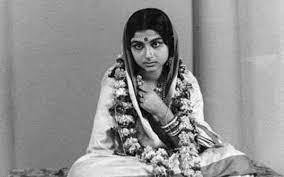
How many filmmakers can start with a comedy of manners and pivot to tragedy? Bergman? Ozu? Add Satyajit Ray to that list. His DEVI (1960, Criterion Channel, TCM, YouTube) starts as a trenchant commentary on Indian society, gender roles and religion. When her husband (Soumitra Chatterjee) goes off to Calcutta to study English, Dayamoyee (Sharmila Tagore) stays in his family’s palatial home to care for her father-in-law (Chhabi Biswas). It’s clear Biswas has it bad for the young woman, and when he dreams she’s the goddess Kali, it gives him an outlet for his forbidden libidinal energy. He starts worshipping her and, when she seems to save the life of a dying peasant boy, the whole countryside joins in. Ray is a director of details, and as Tagore’s cult grows, closeups reveal how trapped she feels in her new identity until it seems to eradicate her. It’s a fascinating view of how a traditional patriarchal society can erase women simply by idealizing them. Biswas’ adoration is not of Tagore, but rather an image in his head. He turns her into the perfect woman, a goddess, and in so doing destroys the beautiful, caring woman he couldn’t allow himself to see. He’s not the only one to ignore who she is. When Chatterjee learns of what’s going on, he comes home to save his wife, which starts by his telling her what she’s thinking. Biswas is often quite funny as the father-in-law, while Chatterjee, who’s living a bachelor’s life in Calcutta until he realizes he’s about to lose the wife he’s basically deserted, has some surprisingly moving moments. In the title role, the 16-year-old Tagore is exquisite, creating her character’s inner life even when she can’t speak or even move. Ustad Ali Akbar Khan contributed the evocative score.
1 note
·
View note
Text
Gulshan Devaiah

This Biography is about one of the best Professional Actor of the world Gulshan Devaiah including his Height, weight, Age & Other Detail… Express info Real Name Kambeyanda Devaiah Gulshan Nickname Gulshan Profession Actor Age (as in 2023) 45 Years old Physical Stats & More Info Height in centimeters- 178 cm in meters- 1.78 m in Feet Inches- 5’ 10” Weight in Kilograms- 68 kg in Pounds- 150 lbs Body Measurements - Chest: 38 Inches - Waist: 32 Inches - Biceps: 13 Inches Eye Colour Black Hair Colour Black Personal Life of Gulshan Devaiah Date of Birth 28 May 1978 Birth Place Bengaluru, Karnataka, India Zodiac sign/Sun sign Gemini Nationality Indian Hometown Jalahalli, Bengaluru, Karnataka, India School Cluny Convent High School, Jalahalli St. Joseph's Indian High School, Bengaluru College National Institute of Fashion Technology, Gandhinagar BEL Pre-University College, Bengaluru Educational Qualifications Degree in Fashion Designing Debut Film Debut: That Girl in Yellow Boots (2010) Family Father- Sri Devaiah Mother- Pushpalatha Devaiah Sister- Not Known Brother- Not Known Religion Hindu Hobbies Theatre plays and reading Controversies Not Known Favourite Things of Gulshan Devaiah Favourite Food South Indian food Favourite Actor Dilip Kumar, Amitabh Bachchan, Irrfan Khan and Naseeruddin Shah Favourite Actress Michelle Yeoh and Sharmila Tagore Favourite Film Forest Gump, The Shawshank Redemption and Kabhi Haan Kabhi Na Favourite Book The Alchemist by Paulo Coelho and India After Gandhi by Ramachandra Guha Girls, Affairs and More of Gulshan Devaiah Marital Status Married Affairs/Girlfriends Kallirroi Tziafeta (Actress) Wife Kallirroi Tziafeta (Actress) Money Factor of Gulshan Devaiah Salary Not Known Net Worth Not Known This Biography Written By www.welidot.com Read the full article
0 notes
Text
10 Timeless Bollywood Classics By The Legendary Lata Mangeshkar You Should Listen Today
For more than seven decades, Lata Mangeshkar has been an iconic voice of Indian film music. As the most recorded artist in history, she’s had a hand in making some of Bollywood’s most beloved classics. Today, we’re taking a look at 10 of her timeless tracks that have stood the test of time and still inspire listeners.
Introduction to Lata Mangeshkar
Lata Mangeshkar is a legendary Indian playback singer. She has recorded songs for over a thousand Hindi films and has sung songs in over thirty-six regional Indian languages. She is one of the best-known and most respected playback singers in India.
Mangeshkar was born on September 28,1929 in Indore, Madhya Pradesh, into a Marathi family. Her father, Pandit Deenanath Mangeshkar, was a classical singer and her mother, Shevanti, was a homemaker. Mangeshkar’s elder sister, Meena Khadikar, was also a playback singer.
Mangeshkar started singing at an early age and made her film debut when she was just thirteen years old. She has recorded songs for films in various Indian languages, including Hindi, Marathi, Bengali, Assamese, Gujarati, Kannada, Bhojpuri, Malayalam and Oriya.
Mangeshkar has won several awards for her contributions to Indian cinema, including the Padma Bhushan (1969), the Padma Vibhushan (1999) and the Bharat Ratna (2001). She has also been awarded the National Film Award for Best Female Playback Singer five times.
Mangeshkar’s career spans more than seven decades. She has sung songs for some of the biggest names in B
List of the top ten Lata Mangeshkar songs that have stood the test of time
Lata Mangeshkar is a legendary playback singer in India who has sung thousands of songs in her career spanning over seven decades. Her voice has been heard in some of the most iconic Hindi film songs of all time. Here is a list of the top 10 songs by Lata Mangeshkar that have stood the test of time:
1. Aye Mere Watan Ke Logo: This patriotic song was composed by C. Ramchandra and written by Kavi Pradeep. The song commemorates Indian soldiers who died during the Sino-Indian War in 1962. The song is still remembered today as one of the most emotional and patriotic songs ever sung.
2. Lag Jaa Gale: This romantic ballad was composed by Madan Mohan and written by Raja Mehdi Ali Khan. It was picturized on Manoj Kumar, Sadhana and released in 1964. The song is still popular today for its soulful melody and lyrics.
3. Chhup Gaye Sare Nazare: The song is a romantic ballad and is one of the most memorable songs sung by Lata Mangeshkar. Her voice is so beautiful and expressive that it perfectly conveys the emotions of the characters in the song.
4. Tere Bina Zindagi Se Koi: This evergreen love song was composed by R.D. Burman and written by Gulzar. It was picturized on Sanjeev Kumar and Suchitra Sen from the film “Khamoshi” and released in 1975. The song is still popular today for its soulful composition and meaningful lyrics.
5. Bahon Mein Chale Aao: The lyrics of the song are very heartwarming and describe the feeling of being in love. The song is from the movie Anamika. Bahon Mein Chale Aao is one of those songs that will stay with you long after you’ve heard it.
6. Yeh Galiyan Yeh Chaubara: This melodious song is from the movie Prem Rog. The song is sung by Lata Mangeshkar, and the music is composed by Laxmikant Pyarelal.
7. Ek Pyar Ka Nagma Hai: This song is one of the most popular songs sung by Lata Mangeshkar and Mukesh from the movie Shor and was released in 1972. The lyrics of the song are penned by Santosh Anand and the music is composed by Laxmikant-Pyarelal. It is a perfect track to listen to when you’re feeling romantic or missing your loved one.
8. Kora Kagaz Tha Yeh Man Mera: The song was sung by Lata Mangeshkar and Kishore Kumar, and picturised on Sharmila Tagore and Rajesh Khanna. The song starts off with a simple melody that gradually builds up into a crescendo. The lyrics are written in a simple yet emotive style, which perfectly captures the feelings of love and longing. The two singers have done a phenomenal job of conveying these emotions through their voices. The music is also very catchy and will stay with you long after you’ve heard it.
9. Yeh Kahan Aa Gaye Hum: This is a classic Bollywood song that has been sung by Amitabh Bachhan and Lata Mangeshkar. The song is from the movie Silsila and is one of the most popular songs of all time. The lyrics of the song are very meaningful and the tune is very catchy. The song has a very strong emotional impact on the listeners.
10. Tujhse Naraz Nahi Zindagi: This song from the movie Masoom is sung by Lata Mangeshkar. The song is a beautiful ballad that has a message of hope and resilience. It is a perfect song for someone who is going through a tough time in their life. The lyrics are very relatable and the melody is very soothing. This is one of those songs that you can listen to over and over again and never get tired of it.
Describe what makes Lata Mangeshkar’s voice so unique and special
Lata Mangeshkar is often referred to as the Nightingale of India and is one of the most celebrated playback singers in Bollywood history. Her unique voice has been described as “honey-coated” and “clear as a bell”, with a wide range and perfect pitch. Lata Mangeshkar began singing at a young age and made her film debut in “Paa laagu kar jori re” from “Aapki Sewa mein” (1947). She went on to record songs for hundreds of Hindi films and has sung in over 20 languages. Mangeshkar’s voice is truly one of a kind and her contributions to the world of Bollywood music are immeasurable.
How Her Songs Are Still Relevant Today
Lata Mangeshkar is often referred to as the Nightingale of India and has been praised for her exceptional vocal abilities. She has recorded songs in over a thousand Hindi films and has sung in multiple languages .
One of the things that makes Lata Mangeshkar’s music timeless is her ability to connect with her listeners. Her songs are full of emotion and resonate with people even today. In a world where Bollywood movies are increasingly becoming more formulaic, her songs offer a much needed respite. They are a reminder of a simpler time when movie songs were truly reflective of the human experience.
Some of Lata Mangeshkar’s most popular songs include “Bhigi Bhigi Rato Me”, “Tum Aa Gaye Ho Noor Aa Gaya”, “Zindagi Pyar ka Geet Hai”, “Gum Hai Kisike Pyar Me” and “Dil To Hai Dil”. These songs are still relevant today because they deal with universal themes such as patriotism, love, heartbreak and longing. No matter what language you speak or where you’re from, these songs will speak to you on a deep level.
The continued influence of her music and how it has impacted subsequent artists
Lata Mangeshkar is one of the most prolific and respected playback singers in India. She has sung hundreds of songs in Hindi and other Indian languages over her career, which spans more than seven decades. Her music has been influential to subsequent generations of Indian artists, both in terms of her vocal style and the choice of songs she has recorded.
Mangeshkar’s influence can be heard in the work of many contemporary Indian singers. For example, Sunidhi Chauhan has cited Mangeshkar as an inspiration, saying “I grew up listening to Lataji’s songs and try to emulate her style in my own singing.” Similarly, Shreya Ghoshal has said that “Lataji is my biggest inspiration… There is no one who can match her versatility or expressiveness.”

Lata Mangeshkar’s work has also been referenced by a number of international artists. In a 2013 interview, Beyoncé said that she was influenced by Mangeshkar when she was growing up: “My mom used to play a lot of Hindi movie music around the house… I definitely remember being fascinated by the sound of Mangeshkar’s voice.” .
Conclusion
Lata Mangeshkar has been an iconic figure in the Indian music industry for over 70 years, and her influence on popular culture will no doubt continue for generations to come. Her timeless songs have touched the hearts of millions, transcending boundaries of language and geography. There is no denying that Lata Mangeshkar was a pioneer when it came to Bollywood music, and she deserves all the respect and admiration that has been bestowed upon her by fans around the world.
#10 Timeless Bollywood Classics By The Legendary Lata Mangeshkar You Should Listen Today#old hindi songs#binaca geetmala#yesudas song lyrics#music#filmfareawards#binaca geetmala hindi songs#filmfare award winners 1960#old hindi songs lyrics#binaca geetmala 1960 to 1970#aesthetic
0 notes
Text
When actresses in the 60s and 70s became brides, their beauty as if the moon was rising, confirmed by undisclosed photos
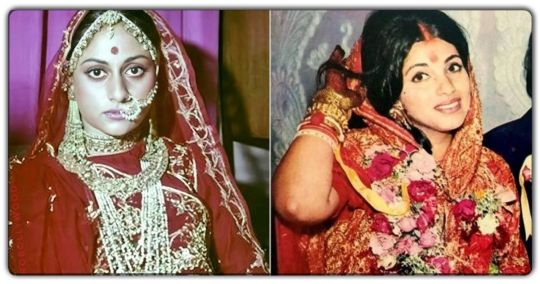
Bollywood actresses in the 1960s and 1970s faced an era of changing beauty, but I can't forget the moment when they overwhelmed the screen with their beauty. Actresses who often appear as avatars of brides in movies. In reality, when these actresses became brides, the moonlight was red on their beauty. When actresses in the 60s and 70s became brides, their beauty as if the moon was rising, confirmed by undisclosed photos 1. Shamilla Tagore Actress Sharmila Tagore was one of the most beautiful and famous actresses of her time. Sharmila is married to Mansoor Ali Khan Pataudi. Sharmila and Mansoor Ali Khan Pataudi were married on 27 December 1968. A procession of tigers came to Sharmila's Kolkata house. She was both married and Sharmila's name was Ayesha Sultana, but this name was restricted to Nikah. To Nawab Pataudi and the world, she has become a shy woman. 2. Jaya Bachchan The discussion of Jaya Bachchan and Amitabh Bachchan's marriage is also very popular. In fact, Mahanayak said that if the film was a success, she decided to go to London with her friends to celebrate for the first time. Meanwhile, Amitabh's father asks who he is going with. So he said about Jaya and her father said to get married first or else he won't go. Amitabh agreed with his father and married Jaya. From Amitabh and Jaya's wedding photos, it can be seen that Jaya was also very beautiful at the time. Kanya Jaya's face in this photo is full of innocence. Talking about the second picture, Amitabh Bachchan is wearing vermilion as requested by Jaya. Siddhartha’s bride wears such an expensive pink shawl before her wedding, and I get dizzy when I know the price. 3. Hema Malini The duo of Dharmendra and Hema Malini is considered iconic in the Indian film industry. The scenes of romance and love drawn by the two were no different from the old school of love for lovers. On 2 May 1980, Hema Malini married Iyengar Rivajo in secret at her brother Jagannath's house. On the other hand, the hippocampus attracted attention with a very modest appearance. Some photos of Hema Malini can be seen on her social media where she is wearing the Dharmendra garland. Isha Ambani, who arrived at the wedding of her best friend Kiara Advani, was in the limelight with a royal look, and Mukesh Ambani’s lover was caught holding a bag containing larks with a diamond necklace in her hand. 4. Dimple Kapadia Veteran actor Rajesh Khanna still rules the hearts of hundreds of people. Rajesh Khanna is married to Dimple Kapadia. Dimple Kapadia was one of the most beautiful actresses of her time. There was a time when everyone was crazy about her beauty. But the uncle's heart fell on a girl before Dimple and that was Anju Mahendru. But when Anju refused to marry him, Rajesh Khanna married Dimple Kapadia. The dimples looked gorgeous even on the wedding day. In the published photo, Dimple is wearing a red sari. 5. Nitu Kapoor Neetu Singh was a very popular actress in the 70's. She married Rishi Kapoor at the height of her film career. On January 22, 1980, this popular Bollywood duo had their 7th turn. As soon as Neetu Singh became Mrs. Ishi Kapoor, she stopped working in her films. 6. Sadhana Rani Sadhana's bridal avatar photos from the 60's are also going viral on social media. Sadhana debuted on March 7, 1966 with director RK. Married Nair. She wore a heavy pink saree on her wedding day. She looked very beautiful in her bridal dress. All the stars of the world of cinema came to his wedding and his special friend Nargis was among them. Check out funny and funny pictures that will make you laugh too DISCLAIMER Thanks for visit our website bollywoodofindia.com . We have taken all measures to ensure that the information provided in this article and on our social media platform is credible, verified and sourced from other Big media Houses. For any feedback or complaint, reach out to us at [email protected] Read the full article
0 notes
Photo
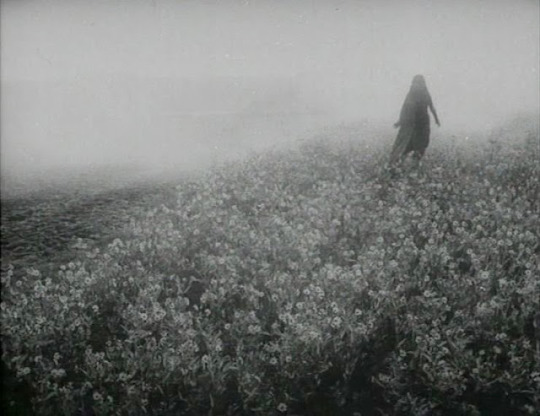
Devi (Satyajit Ray, 1960)
Cast: Sharmila Tagore, Soumitra Chatterjee, Chhabi Biswas, Karuna Bannerjee, Purnendu Mukherjee, Arpan Chowdhury. Screenplay: Satyajit Ray, based on a story by Prabhat Kumar Mukherjee. Cinematography: Subrata Mitra. Music: Ali Akbar Khan.
The dialectic of tradition and change that informs so many of Satyajit Ray's films is uppermost in Devi, as is the director's ongoing portrayal of the role of women in Indian society. Doya (Sharmila Tagore) is Uma's 17-year-old wife, enchantingly beautiful and touchingly naive. She wonders why Uma (Soumitra Chatterjee) must leave her to go study in Calcutta -- he doesn't need the money, she says. Indeed, his family is rich, but Uma's desire to become something more than the son of the wealthy Kalikinkar (Chhabi Biswas) is beyond Doya's limited experience. While he's away, Doya becomes a much-loved member of the household, to the point that her sister-in-law, Harasundari (Karuna Bannerjee), feels jealous that Khoka (Arpan Chowdhury), the son of Harasundari and Taraprasad (Purnendu Mukherjee), seems to love Doya more than his own mother. Doya's father-in-law, Kalikinkar, is so infatuated with her that one night he dreams that she is the incarnation of the goddess Kali, to whom his own name is a sign of his devotion. Kalikinkar proclaims his vision and sets up a special place in the house for Doya to be venerated. The girl is bewildered but powerless to protest. A man who has heard of the incarnated goddess brings his seriously ill son, who has so far not benefited from medical treatment, to the house, praying for help, and when the boy recovers, Doya attracts crowds of the faithful. Alerted to what's going on, Uma returns home, but is unable to persuade the frightened Doya to go away with him. Then young Khoka falls ill and Kalikinkar insists that his parents send away the doctors and allow Doya alone to cure him. The boy dies, and Uma comes home again to find his wife destroyed by the experience. What is essentially a fable about misplaced faith gains immense strength and dignity from Ray's straightforward treatment, which emphasizes the increasing entrapment of Doya in a situation she can't control. Tagore's haunting performance and Biswas's portrayal of Kalikinkar's mad obsession are highlights of a still-provocative film. It became a cause célèbre in India after politicians decided it somehow insulted Hinduism, and only the intervention of Prime Minister Nehru allowed Devi to be shown abroad.
1 note
·
View note
Text
Happy Birthday Sharmila Tagore: Life lessons the veteran actor has imparted to her children | The Times of India
Happy Birthday Sharmila Tagore: Life lessons the veteran actor has imparted to her children | The Times of India
Sharmila Tagore’s oldest, actor Saif Ali Khan has often spoken about how his mother broke many stereotypes when she got married to his father, late cricketer Mansoor Ali Khan Pataudi. Incidentally, the Bengali beauty delivered her biggest hits after tying the knot, such as Aradhana, Chupke Chupke, Amar Prem and many others, a feat unheard, and almost impossible to achieve in the 60s and 70s.…
View On WordPress
0 notes
Text
Happy Birthday Sharmila Tagore: Life lessons the veteran actor has imparted to her children | The Times of India
Happy Birthday Sharmila Tagore: Life lessons the veteran actor has imparted to her children | The Times of India
Sharmila Tagore’s oldest, actor Saif Ali Khan has often spoken about how his mother broke many stereotypes when she got married to his father, late cricketer Mansoor Ali Khan Pataudi. Incidentally, the Bengali beauty delivered her biggest hits after tying the knot, such as Aradhana, Chupke Chupke, Amar Prem and many others, a feat unheard, and almost impossible to achieve in the 60s and 70s.…

View On WordPress
0 notes
Text
Happy Birthday Sharmila Tagore: Life lessons the veteran actor has imparted to her children
Happy Birthday Sharmila Tagore: Life lessons the veteran actor has imparted to her children
Sharmila Tagore’s oldest, actor Saif Ali Khan has often spoken about how his mother broke many stereotypes when she got married to his father, late cricketer Mansoor Ali Khan Pataudi. Incidentally, the Bengali beauty delivered her biggest hits after tying the knot, such as Aradhana, Chupke Chupke, Amar Prem and many others, a feat unheard, and almost impossible to achieve in the 60s and 70s.…
View On WordPress
0 notes
Text
An honest account of life and times of Mohsina Kidwai
Looking at the participation of women and especially Muslim women in politics and their representation in the Parliament, it’s surprising to know that only 20 Muslim women have been elected as Members of Parliament since inception.

She won from Azamgarh, Eastern Uttar Pradesh, in 1978, a year after Congress had suffered a resounding defeat, leaving Nagaur (Rajasthan) and Chhindwara (Madhya Pradesh) for Indira Gandhi. And none of its candidates including Sanjay Gandhi could win.
Mohsina Kidwai, the president of the Uttar Pradesh Congress Committee, hailing from a conservative, elite Muslim family of Awadh, won. Her success gave a fresh lease of life to Congress. Within no time, once again in 1980, Congress not only back in power but also won a majority in most of the State Assemblies.
Mohsina Qadwai not only saw Indian politics from 1960 to 2016 but was also part of its ups and downs and she described them all in the name of My Life in Indian Politics in Hindi and English.
Her memoirs have been documented by senior journalist and author Rashid Kidwai.
Thereafter Congress remained active under Indira Gandhi and later Rajiv Gandhi till 1989. Both these leaders included Mohsina Kidwai in their cabinets. During her tenure as a union minister, Mohsina handled her work with transparency leaving no scope for allegations of any sort.
She had already served in the Uttar Pradesh cabinet and also led the State unit of the party.
Kidwai presided over Congress in UP in the most difficult times. As AICC General Secretary she tried her best to keep Congress — from Kerala to Himachal, including Bihar and Chhattisgarh, — in power and she was often successful.
Mohsina Kidwai made her debut at the age of 28 when she was elected a member of the Uttar Pradesh Legislative Council in 1960. At that time her father-in-law Jamilur Rahman Kidwai was the pillar of Congress politics in Uttar Pradesh.
Interestingly, Mohsina Kidwai’s record as a leader and political career is clean; her family never had to face embarrassment in terms of even allegations of corruption, etc.
She went on to emerge as a staunch Muslim, enlightened, and secular leader. Undoubtedly she had the support of Indira Gandhi, Rajiv Gandhi, and above all the encouragement and political guidance of his father-in-law Jameel Kidwai. Those who know her personally, have an appreciation for the role her husband Khalilur Rahman Kidwai played in her rise.
In her case, it was Khaleel Kidwai was the quintessential man behind every woman’s success.
In the book, you will find commendable impressions about famous faces of Indian politics including Sonia Gandhi, Manmohan Singh, Digvijay Singh, AK Antony, Bhupesh Baghel, Dr. Shashi Tharoor, Sharmila Tagore, and Shabana Azmi.
Similarly, Mohsina Kidwai has spoken about her colleagues and contemporaries in detail and to some extent candidly. These include Indira Gandhi, Rajiv Gandhi, Sonia Gandhi, Arjun Singh, ND Tiwari, Dr. Manmohan Singh, Pranab Mukherjee, Ahmed Patel, Lalu Prasad Yadav, Chandrashekhar, Devegowda, IK Gujral and Madhavrao Scindia, who worked with him. Sachin Pilot’s name also figures in the book.
It would have been better if she had shed some light on the events and incidents during the time of Rajiv Gandhi and Narasimha Rao, which to some extent led to the downfall of the Congress.
The book portrays Mohsina Kidwai as a sensible and skilled politician; an ideal wife, a good mother, a good sister, and a caring woman for her family.
The choice of words for her daughters and sons-in-law is endearing. She has dedicated the book to her late husband Khalilur Rahman Kidwai. He wrote:
“I dedicate this book to my husband late Khalilur Rahman Kidwai who always inspired me to fly towards my dreams and serve society and the nation. Khalil, your Rooh (soul) has always been with me.
Mohsina Kidwai and her biographer Rashid Kidwai not only belong to the Kidwai family of Barabanki but both of them are related to Maulana Abdul Majeed Dariyabadi, whom the former called Dada. Dada happened to be the maternal grandfather of Rasheed Kidwai.
Like Mohsina Kidwai has left her mark as a determined and strong leader, Rashid Kidwai has done a yeoman’s work in journalism and as an author.
Anyway, thank you Mohsina Kidwai for sharing important developments of Indian politics and her life on her 90th birthday, and to Rasheed Kidwai Kidwai for bringing it to the fore.
This book has been published in English and Urdu and should be translated into Hindi for more people to read. This biography is an honest account of not only Kidwai’s journey but of an era of Indian politics.
0 notes
Text
A Photo Of Sharmila Tagore Wedding Is Becoming Viral On Social Media. This Photo Has Been Shared By Sharmila Tagore Daughter Saba Ali Khan On Her Instagram Account.
A Photo Of Sharmila Tagore Wedding Is Becoming Viral On Social Media. This Photo Has Been Shared By Sharmila Tagore Daughter Saba Ali Khan On Her Instagram Account.
बॉलीवुड इंडस्ट्री की दिग्गज एक्ट्रेस शर्मिला टैगोर (Sharmila Tagore) आज किसी पहचान की मोहताज नहीं है. हाल ही में उनकी बेटी सबा अली खान (Saba Ali Khan) ने अपने इंस्टाग्राम एकाउंट पर अपनी मां-बाप की बहुत पुरानी फोटो शेयर की है. फोटो में शर्मिला टैगोर और दिवंगत क्रिकेटर मंसूर अली खान पटौदी (Mansor Ali Khan Pataudi) की शादी की फोटो हैं. सबा अली खान द्वारा शेयर की गई फोटो सोशल मीडिया पर जमकर वायरल हो…
View On WordPress
#Sharmila Tagore#sharmila tagore age#sharmila tagore father#sharmila tagore husband#sharmila tagore son#sharmila tagore songs#sharmila tagore young#शर्मिला टैगोर#सोशल मीडिया
0 notes
Text
Top 10 Bollywood Song Featuring Sharmila Tagore
The diva of Bollywood during the 1960s and 1970s is broadly viewed as one of the top entertainers record-breaking. From town beauty parts to super present-day social young lady, throughout the long term, Tagore set up herself as a sex image, the label which she generally adored. Sharmila played the female lead of Bollywood's unsurpassed favorite star like Rajesh Khanna, Dharmendra, and Shashi Kapoor, and stayed popular and effective with every one of them.
Sharmila has been a piece of numerous popular songs of brilliant previous days and it's unrealistic to list every one of them. However, it's my unassuming endeavor to honor one of the wonderful stars of the silver screen. Here I list my popular Shamila songs having a place in the 1960s and 1970s.
1. Mere Sapnon Ki Rani From Aradhana- I might want to begin with this film and song which changed the thickness of Bollywood and craftsman related to it. Music was formed by S. D. Burman, composed by Anand Bhashi, and sung by Kishore Kumar. The song included Rajesh Khanna, Sujit Kumar, and Sharmila Tagore. Even though Sharmila's character didn't express even a solitary line in the song, this list is fragmented without "Simple Sapnon Ki Rani".
2. Gunguna Rahi Hai Bawre from Aradhana-All the song of the film was incredibly popular and it's one of the two-part harmony songs by Rafi in this film. He sang this two-part harmony aside Asha Bhosle, and the main reasonable look running in this sentimental song.
3. Kora Kaagaz The from Aradhana-This two-part harmony was mentioned for Kishore Kumar and he sang it easily aside Lata Mangeshkar. However, the songs which changed the fate where the performances "Roop Tera Mastana" and "Mere Sapnon Ki Rani", initially implied for Mohammad Rafi "Kora Kaagaz" highlighting Rajesh Khanna and Sharmila Tagore also was very popular and played a critical part in setting up them as one of the main screen pair of Bollywood.
4. Roop Tera Mastana from Aradhana-Yet another show-stopper song from the film which, restored the profession of Kishore Kumar and made him the most praised artist of Bollywood. Like "Mere Sapnon Ki Rani" it's a performance track yet the list of Sharmila songs is inadequate without the sexy performance. instruments for its music were played by a portion of the extraordinary legend of Bollywood film Manohari Singh played the saxophone, Homi Mullan played the duggi and The unbelievable Kersi ruler played the accordion. the song grouping of more than 3½ minute including Khanna and Tagore was imagined in a solitary shot, which is extremely uncommon in Bollywood
5. Chanda Hai Tu from Aradhana-This specific performance track sung by Lata Mangeshkar is anything but a sentimental one, yet so uncommon to me. so I might want to add this paramount track to Sharmila Tagore's song music created by S.D. Burman and verses composed by Anand Bakshi are surely decent. the film likewise incorporate one popular title track sung by the arranger himself which gave him National honor for best playback artist Safal Hogi Teri Aradhana, highlighting Sharmila Tagore.
6. Deewana Hua Badal from Kashmir ki Kali- This film denoted the Bollywood introduction of Tagore, and from that point forward her matching with Shammi Kapoor has consistently been valued. the film's incredibly popular music was created by OP Nayyar, and the verses were written by SH Bihari. the film incorporates numerous chartbuster and evergreen tracks sung by Rafi and Asha especially this one the song was lovelily imagined in the lake and vessel of Kashmir
7. Isaaro Isaaro from Kashmir ki Kali-I might want to incorporate this popular two-part harmony additionally in this list. Kashmir ki Kali is constantly viewed as one of the best works of OP Nayyar and it will consistently remain so. the film is likewise known for a portion of the incredibly popular performance track of Rafi-"Kisi Na Kisi Se, Yah Chand Sa Roshan Chera, and Subhanallah Haseen Chehra". the film additionally incorporate one more popular two-part harmony of Rafi and Asha "Meri Jaan Balle"
8. Kuch Dil Ne Kaha from Anupama-Lata Ji has told in numerous meetings, this astonishing piece by Hemant Kumar is one of her best 10 top choices. the song was envisioned on Sharmila Tagore and Dharmendra in high contrast design. this song incorporates characteristic voice like flying creature peeping and is so near nature and its shooting impact unquestionably discovers a place in my list. it's one of the best Hindi song formed by Hemant Kumar this song depended on raga- Bhimplasi.
9. Mere Dil Mein Aaj kya Hai from Daag-Through it's a performance track sung by Kishore Kumar, I might want to incorporate this amazingly popular sentimental track in this list including Sharmila Tagore songs. Rajesh Khanna played the lead part in this film and there is numerous magnificent track in this film created by Laxmikant Pyarelal. Daag a sonnet of affection was delivered and coordinated by Yash Chopra and was seen for its novel peak. verses were written by Sahir Ludhianvi.
10.Ham Aur Tum Aur Ham from Daag-This song sung by Kishore Kumar and Lata Mangeshkar unquestionably merit a situation in this list. as told over its super hit music was created by Laxmikant Pyarelal and verses written by Sahir Ludhianvi the popular track of the film abdominal muscle "Chahe Ma Ruthe Ya Baba", "Ni Maine Yaar Manana Ni" additionally highlighted Sharmila Tagore. in short the most popular track of the film highlights Sharmila.
You might be interested to read some of the classic hit of Sharmila Tagore Songs
0 notes
Text
Sharmila Tagore: Movies, Age, Young Photos, Songs, Wiki
Sharmila Tagore is one of the famous and beautiful actresses of Bollywood. She was born on 8 December 1946. She is known for her excellent work in Hindi Cinemas as well as Bengali Cinemas. For her excellent work in Indian Cinemas, she got two National Film Awards for her work in the films Mausam (1975) and Abar Aranye (2003). She also received two Film Fare Awards, a Best Actress Awards for the film Aradhana (1969). For her contribution to the cinemas, Sharmila Tagore was awarded a Lifetime Achievement Award. We can assume how talented was with the fact that she was nominated in the Best Actress category at Filmfare at the age of 61 for the drama named Viruddh (2006).

More About Sharmila Tagore
#sharmila tagore#Sharmila Tagore Movies#Sharmila Tagore Songs#Sharmila Tagore Father#Sharmila Tagore Son#Sharmila Tagore Husband#Sharmila Tagore Age#Sharmila Tagore Young Photos
0 notes
Photo
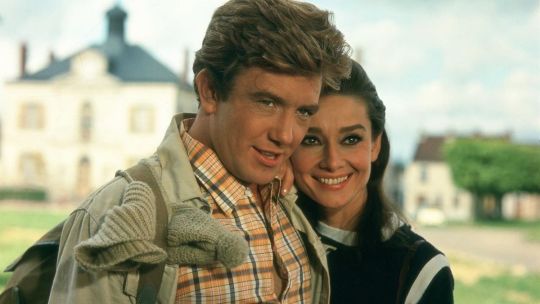
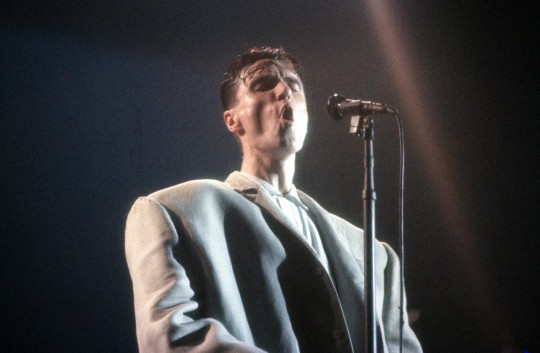
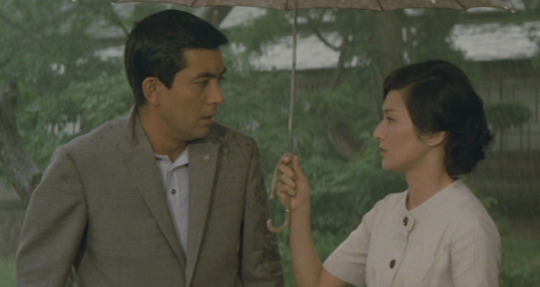
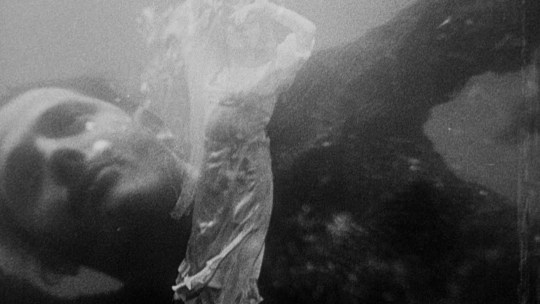

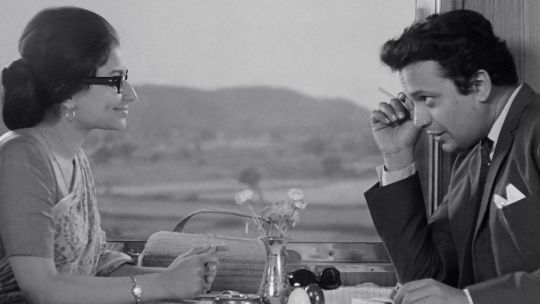
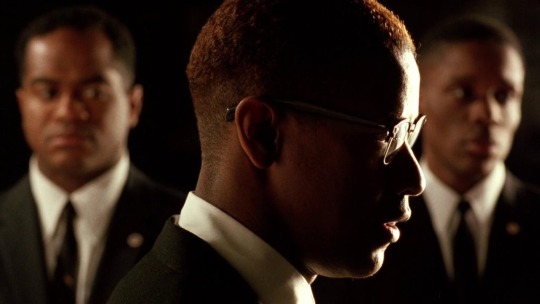
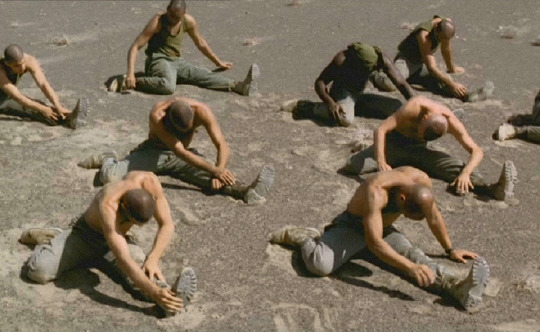

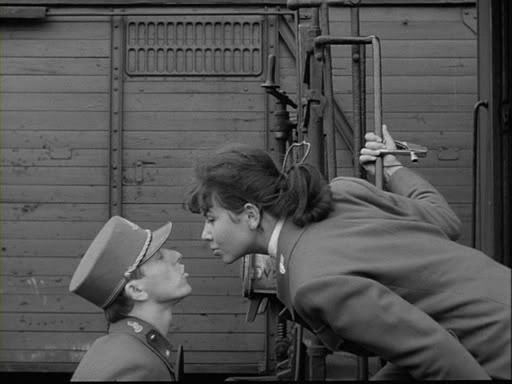
It’s the first day of 2021, which calls (yet again!) for my ten favorite new-to-me movies I watched in 2020!
The rules are the same as always: no movies from this past year (2020) or the year before (2019). Every other year is free game.
All ten of these movies are fascinating and beautiful and well worth your time, so consider this a strong endorsement for all of them. I’ve also included ways to watch all of the films (as of this writing, Jan. 1, 2021).
01. Two for the Road (dir. Stanley Donen, 1967; USA) Donen takes the ideas of romantic cinema and celebrates it while injecting a healthy dose of painful reality. He chooses two of the English language's most attractive movie stars, Albert Finney (in full himbo mode!) and Audrey Hepburn, and follows their ten-year marriage as seen on their various road trips across Europe. It's a memory piece more than anything else, but the arc of their relationship is clear and their palpable connection burns through the screen. These are two beautiful, intelligent adults who love each other deeply, who are still physically attracted to each other, who are able to hurl verbal jabs and insults at each other with the best of them. Finney is magnificent, but Hepburn sort of steals the show. In what is probably her finest onscreen performance, she gets to grow from a virginal bride to a fully fleshed out adult, living beautifully in different shades of sexy and goofy and bitter. They make a screen couple for the ages. The script is funny without losing its honesty, it's tragic without leaning too far into artifice, it's romantic without being treacly. It's a remarkable balancing act and makes for a masterpiece. (Two for the Road is available to rent online or viewed at this link.)
02. Stop Making Sense (dir. Jonathan Demme, 1984; USA) Stop Making Sense feels like a miracle. It hints at a narrative arc, but that part is unimportant. It’s a live performance recorded and packaged specifically for consumption as a film. In its brief runtime, it becomes a living, breathing, sweating testament to David Byrne’s skill as a performer, as a songwriter, as a storyteller, and to the remarkable talents of everyone in Talking Heads. It’s a breathtakingly joyous experience. I can’t remember the last time I watched a recording of a live performance that captured the same brand of energy, of buoyancy, that you feel as you’re leaving a great communal experience. This is a masterpiece that proclaims as loudly as possible that there is no joy greater than making art with people you love. (Stop Making Sense is currently streaming on Amazon Prime.)
03. Scattered Clouds (dir. Mikio Naruse, 1967; Japan) Filled to the brim with unspoken turmoil and emotional devastation, Naruse's final film chronicles the rough terrain of a relationship between a widow and the man responsible for her husband's death. Spanning years and exploring just how deeply these wounds can go, much of the Scattered Cloud’s success rests on the performances from Yuzo Kayama and Yoko Tsukasa. Kayama is a handsome, likable screen presence who beautifully lives in his own cloud of grief. Tsukasa gets a bit more to chew on, as this really is her story: her arc and her inability to move forward, despite the best intentions, is one of the film's most lasting ideas. Brutally sad but incredibly beautiful. The work of a master filmmaker. (Scattered Clouds is currently streaming on the Criterion Channel.)
04. L’Atalante (dir. Jean Vigo, 1934; France) My only regret with L’Atalante is that I didn’t see it sooner. The final (and only feature-length) film from Jean Vigo before his untimely death at 29, this film is a technical marvel and a humanist miracle. Featuring spirited performances from Dita Parlo, Jean Dasté, and the great character actor Michel Simon, and intoxicating dreamlike imagery, as well as a relentlessly romantic score from Maurice Jaubert, this film looks and feels like no other film from its era. (L’Atalante is currently streaming on the Criterion Channel.)
05. Daisies (dir. Věra Chytilová, 1966; Czechoslovakia) Věra Chytilová's iconic masterpiece of anarchic cinema more than lives up to its reputation. Operating on its own chaotic wavelength, Daisies follows the exploits of Marie I (Jitka Cerhová) and Marie II (Ivana Karbanová) who seek to spoil themselves after realizing how spoiled the world is. They begin to live extravagantly and rip off older men and cause general mischief. Over less than 80 minutes, Daisies upends a whole slew of cultural norms. Beautiful, ambiguous, funny, cynical, and truly visionary. (Daisies is currently streaming on the Criterion Channel and HBO Max.)
06. The Hero (dir. Satyajit Ray, 1966; India) The Hero sort of feels like Satyajit Ray's answer to 8½ in its meditation of fame and regret. Uttam Kumar is fantastic as Arindam Mukherjee, a superstar actor who works through his career and his loss of values in an interview with a reporter played by Sharmila Tagore, who is also fantastic. Under Ray's sleek direction, gracefully opening up the world of the train, and with his intelligent and human script, the cast uniformly sinks their teeth into this film. Kumar is the MVP out of necessity -- without him, the whole film would fall apart -- but the whole ensemble is remarkable, peppering the background of the train scenes and in Arindam's flashbacks. This also has one of the all-time great nightmare sequences. Easily one of the master director’s best films. (The Hero is currently streaming on the Criterion Channel.)
07. Malcolm X (dir. Spike Lee, 1992; USA) Malcolm X is a truly massive film housing an even bigger performance from the great Denzel Washington. Tracing Malcolm X’s life and career while juggling numerous tones and visual styles and spanning across decades and continents, this is surely Spike Lee’s most ambitious film up to this point in his career. Washington is onscreen for virtually all of its long runtime, from the early exuberant days before his imprisonment all the way up to that fateful day in the Audubon Ballroom, and he is, of course, tremendous. All that classic Denzel charisma and magnetism is on full display, whether in his impassioned speeches or in his more intimate scenes. Lee’s direction is top notch, making this full story about a life with an incalculably profound impact feel richly and deeply intimate. This is one of the essential American epics. (Malcolm X is available to rent online.)
08. Beau Travail (dir. Claire Denis, 1999; France) Beau Travail’s place in the modern canon of world cinema is assured, and Denis is rightfully seen as a master, but it really can’t be overstated just how much of a gem this film is. Pepper with sparse dialogue (though always packed with meaning), the film lives in one of two modes: muscular, suntanned men doing slow, precise choreographed exercises in the heat of the day and those same muscular men dancing and gyrating with attractive young women in some ethereal nightclub. Between these poles lies Denis’ almost cosmic meditation on masculine ego, homoerotic obsession, and regret. A fascinating, enigmatic, devastating beauty. (Beau Travail is currently streaming on the Criterion Channel.)
09. Only Angels Have Wings (dir. Howard Hawks, 1939; USA) Only Angels Have Wings might be Howard Hawks' crowning directorial achievement. The aerial work, the rainy nights, the beautiful atmosphere of the bars, the palpable camaraderie of the characters, the tragic loss of life and yet the persistence to move forward. Cary Grant leads a terrific cast, including a quietly moving Richard Barthelmess and a rarely-more-likable Thomas Mitchell, and his chemistry with both Jean Arthur (the most charming) and Rita Hayworth is a joy to watch. This film seems to dabble in multiple genres at once, subverting the cliches of the Hollywood formula while still embracing the melodrama and the artifice within. In that way, the film feels very strange, but if the viewer lets themselves be carried along with Hawks' unique rhythm, the reward is one of the most fascinating and exciting films in Hollywood's fabled 1939 output. (Only Angels Have Wings is available to rent online or viewed at this link.)
10. Closely Watched Trains (dir. Jiří Menzel, 1966; Czechoslovakia) Between the precise composition of the shots and the young narrator-protagonist, Closely Watched Trains feels like a spiritual predecessor to Wes Anderson's work. This comparison extends to the thematic content of the film as well, as the story of a young man coming-of-age against the backdrop of the Nazi regime is definitely cut from the same cloth as The Grand Budapest Hotel. Lucky for me, I love Anderson's work, and Grand Budapest is my favorite of his, so Menzel's stylistic flourishes immediately endeared me to the film.Menzel maintains a skillful tonal balancing act throughout Closely Watched Trains. Even under the wry, almost self-deprecating humor, the film never loses track of preciousness of life and the horrific tragedy of war. Beautiful cinematography, strong performances across the board, a memorable score, and a clever script make this a gem of the Czech New Wave and a moving, delightful, and accessible coming-of-age tale. (Closely Watched Trains is currently streaming on the Criterion Channel.)
Honorable mentions (in alphabetical order): Ace in the Hole (Billy Wilder, 1951), The Band’s Visit (Eran Kolirin, 2007), But I’m a Cheerleader (Jamie Babbit, 1999), Carnival of Souls (Herk Harvey, 1962), A Cottage on Dartmoor (Anthony Asquith, 1929), Crossing Delancey (Joan Micklin Silver, 1988), Divorce Italian Style (Pietro Germi, 1961); Eat Drink Man Woman (Ang Lee, 1994), Fireworks (Kenneth Anger, 1947), The Freshman (Fred C. Newmeyer & Sam Taylor, 1925), The Hitch-Hiker (Ida Lupino, 1953), Kuroneko (Kaneto Shindo, 1968), Le Bonheur (Agnès Varda, 1965), Le Notti Bianche (Luchino Visconti, 1957), Like Father, Like Son (Hirokazu Kore-eda, 2013), Local Hero (Bill Forsyth, 1983), Love & Basketball (Gina Prince-Bythewood, 2000), Mad Max 2: The Road Warrior (George Miller, 1981), Monsoon Wedding (Mira Nair, 2001), One Sings, the Other Doesn’t (Agnès Varda, 1977), Pennies from Heaven (Herbert Ross, 1981), Pickup on South Street (Samuel Fuller, 1953), Rushmore (Wes Anderson, 1998), Seven Samurai (Akira Kurosawa, 1954), Sleepless in Seattle (Nora Ephron, 1993), Symbiopsychotaxiplasm: Take One (William Greaves, 1968), Tea and Sympathy (Vincente Minnelli, 1956), They Shoot Horses, Don’t They? (Sydney Pollack, 1969), Tomboy (Céline Sciamma, 2011), Wendy & Lucy (Kelly Reichardt, 2008), Within Our Gates (Oscar Micheaux, 1920), Whisper of the Heart (Yoshifumi Kondo, 1995), and Who Framed Roger Rabbit (Robert Zemeckis, 1988).
And some miscellaneous viewing stats:
First movie watched in 2020: A Fantastic Woman (Sebastián Lelio, 2017)
Final movie watched in 2020: Holiday (George Cukor, 1938)
Worst movie watched: The Notebook (Nick Cassavetes, 2004)
Oldest movie watched: Ten films by the Lumière Brothers (Louis Lumière, 1895)
Longest movie watched: Seven Samurai (Akira Kurosawa, 1954; 207 minutes)
Month with most amount of movies watched: December (58 movies, including shorts)
Month with least amount of movies watched: February (11 movies) (pre-COVID, naturally)
First movie from 2020 seen: Birds of Prey (Cathy Yan, 2020)
Total movies watched: 455
#sometimes elliott watches movies#year in review#two for the road#stop making sense#scattered clouds#l'atalante#daisies#the hero#malcolm x#beau travail#only angels have wings#closely watched trains
100 notes
·
View notes